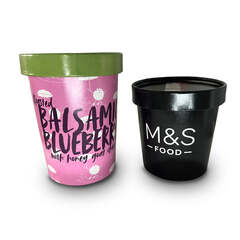The World of Soda Cups A Deep Dive into the Iconic Beverage Vessel
Soda cups are ubiquitous in our daily lives, often overlooked yet profoundly intertwined with our culture, social activities, and even health practices. These simple vessels utilized for serves of fizzy drinks have evolved over the years in design, materials, and significance. In this article, we will explore the history, design evolution, environmental impact, and cultural significance of soda cups, while also touching upon the modern developments that aim to make them more sustainable.
The Historical Journey
The journey of the soda cup began in the late 19th century with the invention of soda fountains. Initially made of glass, these early soda cups were often heavy and fragile. Glass gave way to more practical materials as soda consumption gained popularity, especially in the mid-20th century when fast-food chains emerged as beacons of American culture. The classic paper soda cup, adorned with colorful graphics and logos, became a staple in drive-thrus and fast-casual restaurants.
By the 1980s and 1990s, plastic became the prevailing material for soda cups. The lightweight and durable nature of plastic transformed the beverage industry. These cups were not only convenient for customers but also cost-effective for businesses. The introduction of the disposable cup model heightened the convenience of enjoying cold beverages on the go, reflecting the fast-paced lifestyle of the era.
Design and Branding
One of the fascinating aspects of soda cups is their role as a branding canvas
. Fast food chains and beverage companies have harnessed the power of design to create memorable experiences for consumers. Bright colors, catchy slogans, and eye-catching logos are meticulously crafted to attract attention and enhance brand recognition. Limited edition soda cups, especially during major events like the Super Bowl or Olympics, have become collectors' items, further emphasizing their cultural significance.Moreover, the design of soda cups has not only focused on aesthetics but also on functionality. The introduction of lids and straws has enhanced user experience, allowing people to drink on the go without worrying about spills. The recent trend toward double-walled cups offers thermal insulation, keeping drinks cold for extended periods, benefiting both consumers and the environment by reducing the need for ice.
soda cups

Environmental Concerns
Despite their convenience, soda cups have come under intense scrutiny for their environmental impact. With billions of cups discarded each year, the issue of plastic pollution has escalated. Many soda cups, especially those made of Styrofoam, are notoriously difficult to recycle. This has led to notable campaigns advocating for the reduction of single-use plastics and pushing for more sustainable alternatives.
A noteworthy development in this area is the shift towards biodegradable and compostable materials. Many companies are experimenting with cups made from plant-based materials, which not only reduce the reliance on fossil fuels but also break down more easily in landfills. Brands have started implementing programs for circularity, encouraging customers to return used cups for recycling or composting.
Cultural Significance
The soda cup is more than just a vessel; it represents a cultural phenomenon. From sharing a drink at a summer barbecue to the iconic image of a soda cup beside a popcorn bucket in a movie theater, these cups evoke feelings of nostalgia and social interaction. They are intricately linked to experiences and memories, making them a staple in various social gatherings.
In addition, soda cups hold a unique place in the world of marketing and entertainment. Collaborations between beverage brands and major franchises, such as movies or sports teams, have led to limited-edition cups that resonate with fans. This connection fosters a sense of community and shared interest, elevating the simple act of consuming a beverage into a collaborative cultural experience.
Conclusion
Soda cups may seem like a trivial aspect of our daily lives, but they pack a much deeper significance than their humble appearance suggests. From their historical evolution and role in branding to their environmental implications and cultural ties, soda cups encapsulate a rich narrative that reflects our society's changing values. As we move towards a more sustainable future, the evolution of the soda cup will undoubtedly continue, adapting to our needs while still serving as a beloved vessel for sharing moments over a refreshing drink. Whether it's a classic Coke or an artisanal soda, the cup remains an essential part of the experience, symbolizing both enjoyment and connection.



